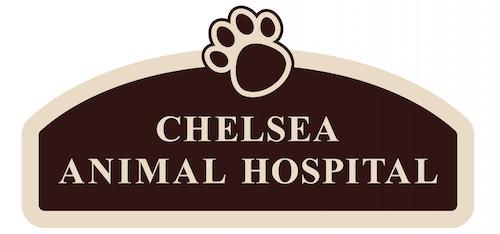What is GOLPP?
Geriatric Onset: elderly age of onset signs of the condition.
Laryngeal Paralysis: degeneration of nerves that control the muscles that move the laryngeal cartilages, located in the throat. These cartilages control airflow into and out of the trachea (windpipe) during breathing. During swallowing, normal laryngeal function protects the airway by closing the opening to the trachea and preventing aspiration of food or water. In laryngeal paralysis, respiratory obstruction occurs because the cartilages remain in a central position causing airway resistance, instead of opening up the airway during inspiration.
Polyneuropathy: the nerves responsible for laryngeal movement arise from the vagus nerve, one of the body’s major nerves. Clinical investigations have shown that other nerves are also affected, leading to clinical signs, such as poor swallowing function, slowly progressing hind-end weakness, and loss of muscle mass.
Who is Most Commonly Affected by GOLPP?
- Geriatric dogs, anywhere from 8 to 13 years, an average age of 11 years.
- Medium to large breed dogs, mostly Labrador Retrievers, but also Newfoundlands, Borzois, Golden Retrievers, Greyhounds, German Shepherd Dogs, Brittany Spaniels, and even mixed breed dogs.
What are the Signs of GOLPP?
- Increased noisy breathing from the throat (stridor), sometimes called “roaring”, is most noticeable when panting.
- Distressed breathing, especially in hot weather, humidity, and when excited or stressed.
- Unable to exercise as much, may sit down or even collapse.
- Bark change / hoarse bark (in about half the cases).
- When severe, the gums may become pale or blue-colored (not the normal pink color).
- Throat-clearing, hacking, or coughing.
- Gagging with or without regurgitation (may or may not be associated with drinking/eating).
- Hind-end weakness and an unsteady gait.
- Loss of muscle mass.
Which Tests are Done to Diagnose GOLPP?
- Laryngoscopy: performed using a short-acting anesthetic which allows evaluation of laryngeal movement during breathing.
- Neck X-rays: evaluates the throat to rule out other causes of laryngeal paralysis including cancer, trauma, and foreign body.
- Chest X-rays: three views are taken to maximally evaluate the internal structures of the chest, including the heart, lungs, trachea, and esophagus (food pipe).
- Esophagram: evaluates esophageal function during swallowing using real-time X-ray (fluoroscopy). Swallowing is observed with liquid, canned food, and kibble. Any signs of reflux from the stomach or hiatal hernia are also noted.
- Neurological exam: examines gait, muscle tone, awareness of leg position, and many different reflexes.
- Nerve and muscle biopsies: several small biopsies give valuable information on the type and status of any nerve and muscle degeneration.
- Electrodiagnostics: Electromyography (EMG) and nerve conduction testing while under anesthesia is performed to evaluate the condition of the muscles and peripheral nerves.
- CBC (complete blood count), serum chemistry, and urinalysis: these baseline lab tests assess the status of many organs, blood cells, and hydration. It is performed to check on the underlying health of your dog.
How is GOLPP Treated?
- Arytenoid laryngoplasty surgery (“tie-back”): An incision is made on the side of the dog’s neck to approach the larynx. One of the laryngeal cartilages (arytenoid) is disarticulated and permanently fixed in an open position. This increases the laryngeal opening and decreases airway resistance. Dogs experience immediate and marked improvement in breathing after this surgery.
- Swallowing function: depending on the degree of esophageal dysfunction and risk of aspiration pneumonia, medications to aid with swallowing may be prescribed. Feeding habits may also be changed to decrease risk of aspiration pneumonia.
What are the Complications Associated with the “Tie-back” Surgery?
- Aspiration pneumonia = 18% risk. This is probably due to both the “tie back” increasing the risk of aspiration, and to poor esophageal function.
- The risk of aspiration increases with the severity of esophageal dysfunction.
- Aspiration pneumonia usually responds well to medical management.
- Failure of “tie back” surgery is extremely rare, if done correctly.
- Failure of “tie back:” risk of failure is very low; clinical signs of laryngeal paralysis will reoccur.
What to Expect After Surgery:
- Respiratory noise will decrease, but some noise may still be present when exercising.
- Exercise tolerance will improve significantly.
- Feeding: throat-clearing is not unusual following eating or drinking, and sometimes during the night. This may improve by changing the position of food/water bowls, and slowing down eating, and medications.
- Aspiration pneumonia: inappetence and lethargy are the earliest signs. This can usually be treated very successfully.
- Quality of life improves significantly.
What to Expect in the Long-term?
- GOLPP is a progressive degeneration of nerves. Over time, hind-end weakness and generalized muscle wasting will occur. This will slowly progress over several years.
- This type of neurologic degeneration is not painful, and affected dogs are still bright, alert, and happy.
- Aspiration pneumonia: dogs with poor esophageal function, or megaesophagus, will be at increased risk of repeated episodes of aspiration pneumonia.
